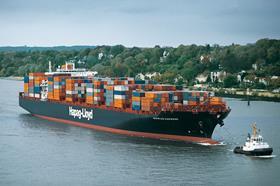
Hapag-Lloyd has published its 2020 sustainability report, noting that is has made 'significant progress' in environmental, social, qualitative and economic terms.
Since the beginning of last year, the shipping group's fleet has been operating using IMO 2020-compliant low-sulphur fuel oil, reducing its sulphur-oxide emissions by roughly 70 per cent compared with 2019.
The group achieved fuel savings of around 15 per cent on 39 vessels by removing fouling from their outer hulls. At the same time, Hapag-Lloyd became the first shipping company in the world to convert a large container ship to dual-fuel propulsion, which can operate using liquefied natural gas (LNG).
Orders have also been placed for six state-of-the-art container ships – each with a capacity of more than 23,500 TEU – whose fuel-efficient high-pressure dual-fuel engines will also be able to operate using LNG, thereby reducing CO2 emissions by between roughly 15 and 25 per cent.
Hapag-Lloyd said the biggest challenge in the years ahead would continue to be climate change, and confirmed that more would need to be invested in research and development related to propulsion concepts and fuels if it was to reach its goal of achieving climate neutrality in shipping.
“We have made a lot of progress in all sustainability dimensions,' said Rolf Habben Jansen, CEO of Hapag-Lloyd. 'At the same time, we are conscious of the fact that we also have a very great responsibility when it comes to climate protection.
'We will therefore continue to work hard to modernise our fleet and to reduce our carbon footprint. This will likewise remain an essential part of our new sustainability strategy, which we will be publishing later this year.
'At its core, it is about continuously increasing our contribution to sustainability-related efforts and making incremental improvements,” he added.



